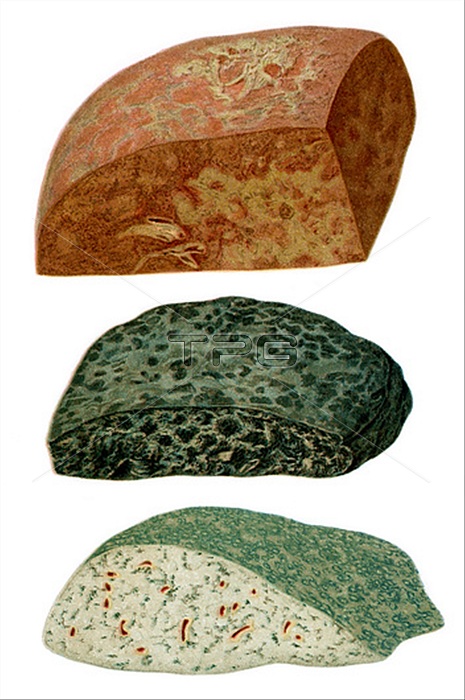
Lung disease, illustration. Examples of lung diseases caused by inhalation of inorganic dusts referred to as pneumoconioses. Clinically the inhaled dusts stimulate fibrosis. At top is red iron lung following chronic inhalation of ferric oxide referred to as pulmonary siderosis. The lung tissue is of very firm consistency with red-brown deposits of iron and pale, greyish patches of fibrous tissues. At centre is coal miners lung, or anthracosis, showing scattered black areas of accumulated carbon within macrophages which itself is not fibrogenic as carbon does not usually kill alveolar macrophages. Coal-dust macrophage accumulations impair the respiratory bronchioles causing emphysema. At bottom is silicosis where the lung surface is a grey-blue colour and within which are many firm fibrous nodules. Silica particles are toxic to macrophages which die and produce fibrotic deposits. Dead macrophages release their engulfed silica particles which are then reingested by more macrophages thus amplifying the pathological process. Silicosis cannot be cured and the excessive fibrosis results in moderate to severe restrictive respiratory function or failure. From Bollinger, O. 1901 Atlas und Gundriss der Pathologischen Anatomie, vol 1. Lehmann, Munich.
| px | px | dpi | = | cm | x | cm | = | MB |
Details
Creative#:
TOP29389334
Source:
達志影像
Authorization Type:
RM
Release Information:
須由TPG 完整授權
Model Release:
Not Available
Property Release:
Not Available
Right to Privacy:
No
Same folder images:

 Loading
Loading